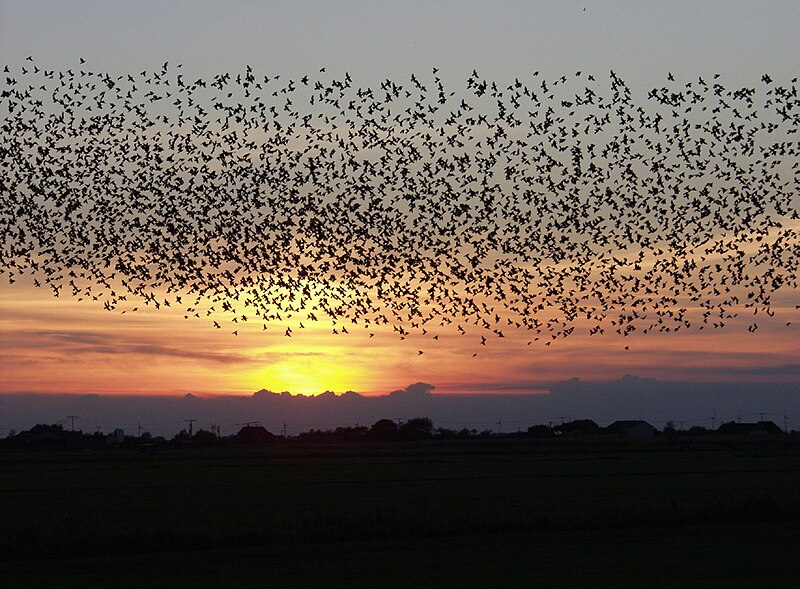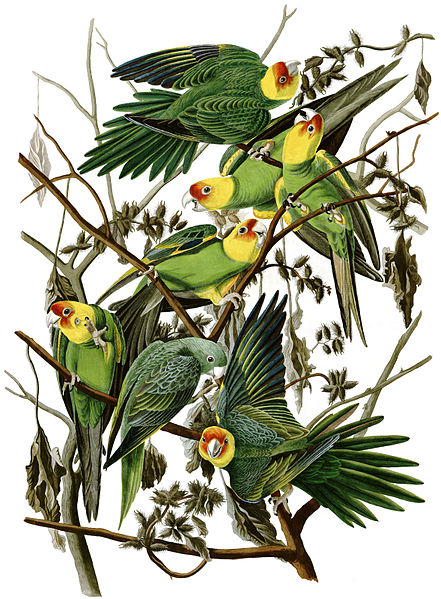Please see Part 1 of this article for information on the natural history and care other South American Cardinals. Today we’ll take a closer look at a species that is much sought-after by experienced aviculturists, the Green or Yellow Cardinal, Gubernatrix cristata. Read More »
Category Archives: Wild Birds
Feed SubscriptionIntroducing the Spectacular South American Cardinals – Part 1
Four species of Cardinal native to South America – the Red Crested, Dominican (Pope), Yellow-Billed and Yellow (Green) – are well-established in private aviculture, and, unlike the red Northern Cardinal, all may be legally kept in the USA. Colorful, hardy and with a melodious voice, South American Cardinals make a wonderful addition to the collections of those with a bit of softbill-keeping experience.
Today I’ll introduce the group, and will move on to captive care next time. Read More »
Parrot Oddities – Three Unusual Species from Australia and New Guinea
 Australia and many nearby South Pacific islands are well known for mammalian oddities such as the Platypus, Tree Kangaroo and Echidna. But Psittacine enthusiasts have much to look for here as well, as the region is also home to some of the world’s most unusual and little-studied parrots. Today I’ll cover a few of the more striking of these – the Pygmy Parrots, Rock Parrot and Green Rosella.
Australia and many nearby South Pacific islands are well known for mammalian oddities such as the Platypus, Tree Kangaroo and Echidna. But Psittacine enthusiasts have much to look for here as well, as the region is also home to some of the world’s most unusual and little-studied parrots. Today I’ll cover a few of the more striking of these – the Pygmy Parrots, Rock Parrot and Green Rosella.
Pygmy Parrots, Micropsitta spp.
Sufficiently unique to have been classified into their own subfamily, the 6-8 species of Pygmy Parrot are found on New Guinea and several nearby islands. They truly live up to their name…the largest barely tops 4 inches in length while the smallest, the Buff Faced Pygmy Parrot (M. pusio), is a mere 3 inches long and weighs but 0.41 ounces! Read More »
Decision-Making in Bird Flocks – Some Individuals Lead, but All Have a Vote
 Who hasn’t marveled at the way bird flocks seem to move as a single organism? Groups ranging in size from a dozen Zebra Finches to millions of Budgerigars change direction with astonishing fluidity and speed, confusing predators and leaving observers to wonder just how they mange to accomplish such feats.
Who hasn’t marveled at the way bird flocks seem to move as a single organism? Groups ranging in size from a dozen Zebra Finches to millions of Budgerigars change direction with astonishing fluidity and speed, confusing predators and leaving observers to wonder just how they mange to accomplish such feats.
Flexible Leadership
While birding in deserts, grasslands and other open habitats that allowed long, clear views of large flocks, I’ve tried, unsuccessfully, to determine if it was a single leader “calling the shots” or some sort of unobservable group dynamics at work.
Recently, researchers at Oxford and Eotvos Universities have provided part of the answer, at least where pigeons are concerned. Research published in the April, 2010 edition of the journal Nature, establishes that pigeons use flexible hierarchy system to make group decisions (direction of travel, choice of feeding site, etc.). Read More »
Conservation News – No Recovery Plan for the Endangered Thick Billed Parrot
 I’ve been involved in a number of field research efforts, and so am somewhat familiar with the difficulties inherent in funding and implementing conservation work. However, I must admit that this situation is baffling – a recovery plan has not yet been formulated for the Thick Billed Parrot (Rhynchopsitta pachyrhyncha), despite the fact that the bird has been protected by the Endangered Species Act since the law’s inception in 1973!
I’ve been involved in a number of field research efforts, and so am somewhat familiar with the difficulties inherent in funding and implementing conservation work. However, I must admit that this situation is baffling – a recovery plan has not yet been formulated for the Thick Billed Parrot (Rhynchopsitta pachyrhyncha), despite the fact that the bird has been protected by the Endangered Species Act since the law’s inception in 1973!
Help for the US’s Last Native Parrot?
The Thick Billed Parrot is the only remaining Psittacine native to the US Mainland. The other, the Carolina Parakeet, was hunted to extinction in the early 1900’s. With less than 3,000 individuals surviving in the wild, this green and red parrot may be headed for a similar fate if remedial action is not undertaken soon.
To that end, the conservation organization WildEarth Guardians has filed suit against Secretary of the Interior Ken Salazar, seeking to compel the implementation of a recovery plan. Let’s hope for a “parrot-friendly” outcome!
Wild and Captive Status
 Thick Billed Parrots regularly ranged into central Arizona and New Mexico until the early 1900’s, and sporadically until the mid 1960’s. Today they are virtually unknown within US borders. A reintroduction plan instituted by the state of Arizona was not successful.
Thick Billed Parrots regularly ranged into central Arizona and New Mexico until the early 1900’s, and sporadically until the mid 1960’s. Today they are virtually unknown within US borders. A reintroduction plan instituted by the state of Arizona was not successful.
Although far from common in captivity, the birds do breed well when properly provided for… a group I’ve watched for years is a star attraction at the Queens Zoo in New York City. Private keepers have had some success with this species as well, and even provided several of the individuals released in Arizona.
Further Reading
Please see The USA’s “Other” Parrot for more information on this fascinating bird (it forages in the snow!).
Please visit the WildEarth Guardians Website for more on the group’s work with Parrots, Jaguarundis, Tortoises and other animals.
Thick-billed Parrots image referenced from wikipedia and originally posted by Paul Reynolds and Snowmanradio
 That Bird Blog – Bird Care and History for Pet Birds
That Bird Blog – Bird Care and History for Pet Birds
